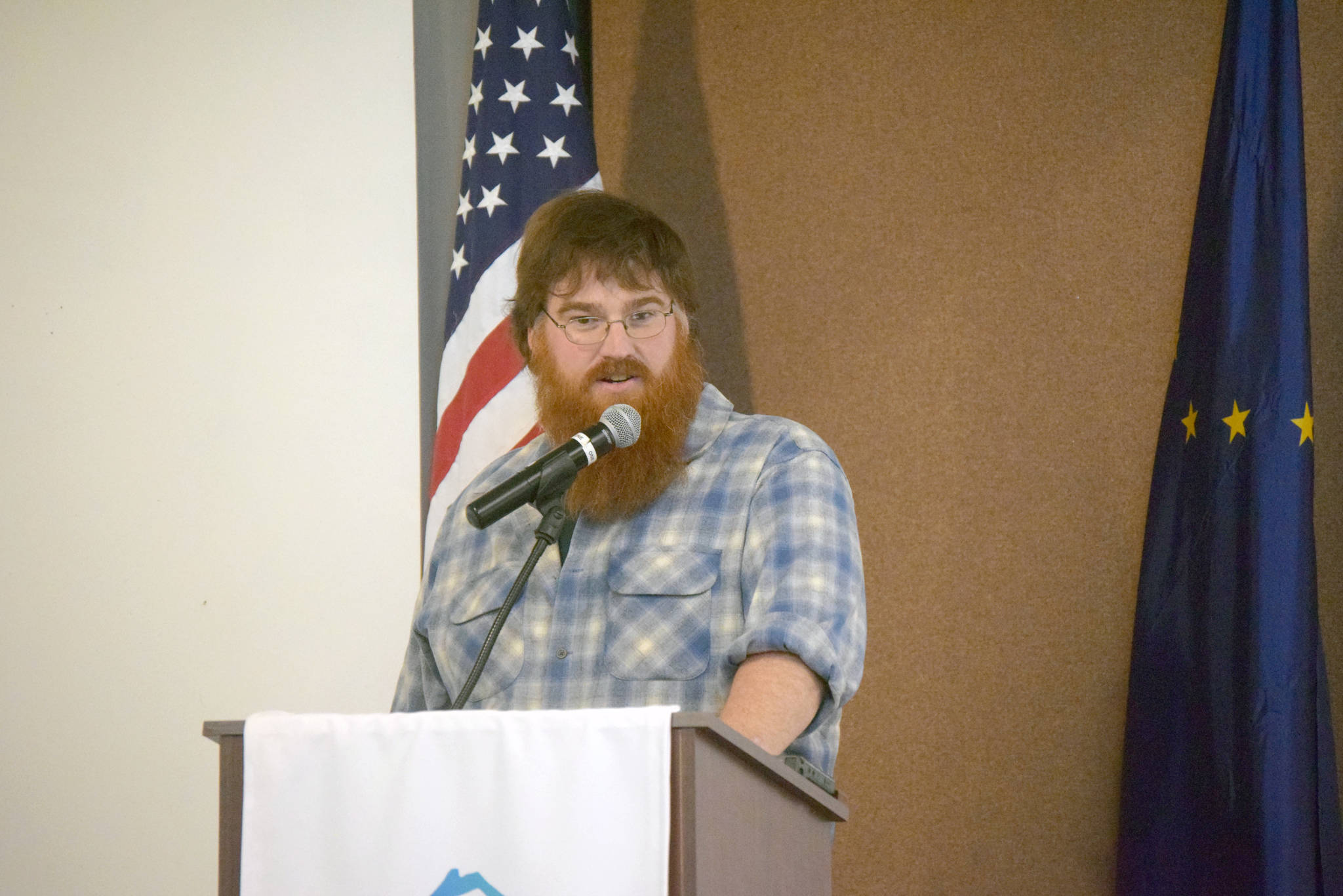While much of the discussion over the proposed Pebble Mine project in Bristol Bay has focused on its impact to the area’s fishing industry, the project’s potential impact to another species was up for debate at yesterday’s Joint Kenai/Soldotna Chamber Luncheon.
During a presentation, Sam Snyder with the Wild Salmon Center and Drew Hamilton with Friends of McNeil River shifted the focus to how the mine would affect brown bears.
A professional bear-viewing guide who works out of Homer, Hamilton said that many of his colleagues in the bear-viewing industry fly to the western side of Cook Inlet — specifically areas in Lake Clark National Park, the Katmai National Park and Preserve and the McNeil River State Game Sanctuary and Refuge — for the bulk of their tours. Together, these areas are home to the largest concentration of brown bears in the world, with around 2,200 in Katmai National Park alone. Hamilton said that he has seen 78 brown bears in a single quarter-mile stretch along the McNeil River.
Hamilton said that bear viewing has been an industry on the rise over the last several years and broke down a recent economic study from the University of Alaska Fairbanks that illustrates this. According to the study, the bear-viewing industry reported $34.5 million in sales in 2017, and 371 new hires were made in the industry in that year alone.
Hamilton’s concern is that the Draft Environmental Impact Statement on the Pebble Project recently put out by the Army Corps of Engineers did not take brown bears or the bear-viewing industry into account when analyzing the potential impacts of the mine. Part of the proposed project includes a 38-mile road corridor stretching from the southern shore of Lake Iliamna to the Cook Inlet, and Hamilton said that a portion of that road would be just 250 yards from the boundary of the McNeil River Refuge and 13 miles from the McNeil Falls. While the Army Corps has looked at the impact on bears within 3 miles of the road, Hamilton argued that bears often travel much farther than 3 miles, sometimes over 20 or 30.
Hamilton expressed concern that the road will not only endanger the bear habitats, but will also diminish the “untouched wilderness” aspect of bear viewing that appeals to many tourists.
“When people come to Alaska, one of the first questions they ask is ‘where can I see a bear?’” Hamilton said. “And honestly, bears and roads just don’t mix.”
Hamilton said that he submitted several comments to the Army Corps regarding the impact of the mine and related infrastructure on bear habitats, but his concerns were not taken into consideration.
“The stuff I told the Corps is of concern to me, my colleagues, the pilots I fly with, the bed and breakfasts where my guests stay,” Hamilton said. “This is our livelihood. If I can’t fight for my livelihood, then why am I here?”

